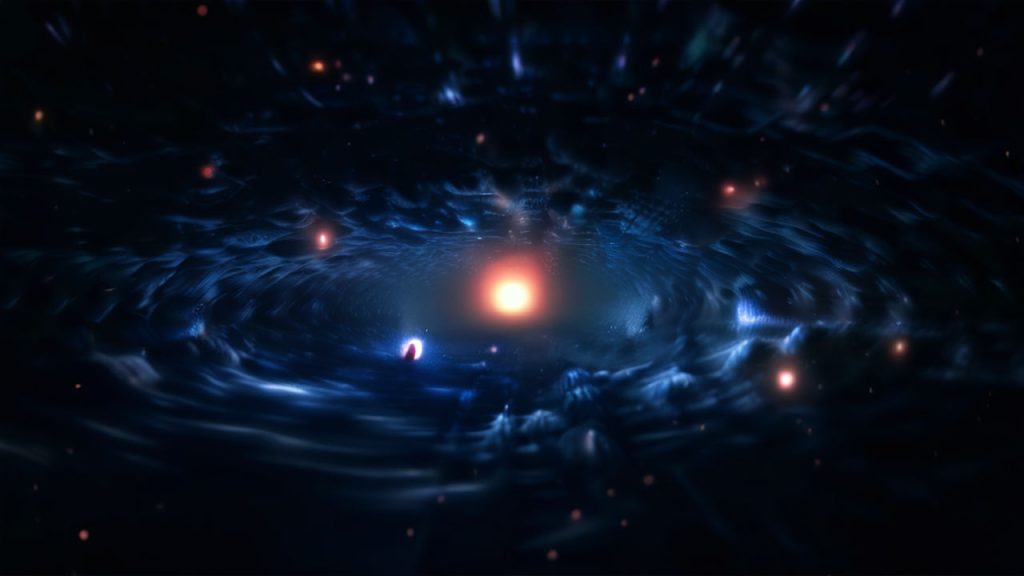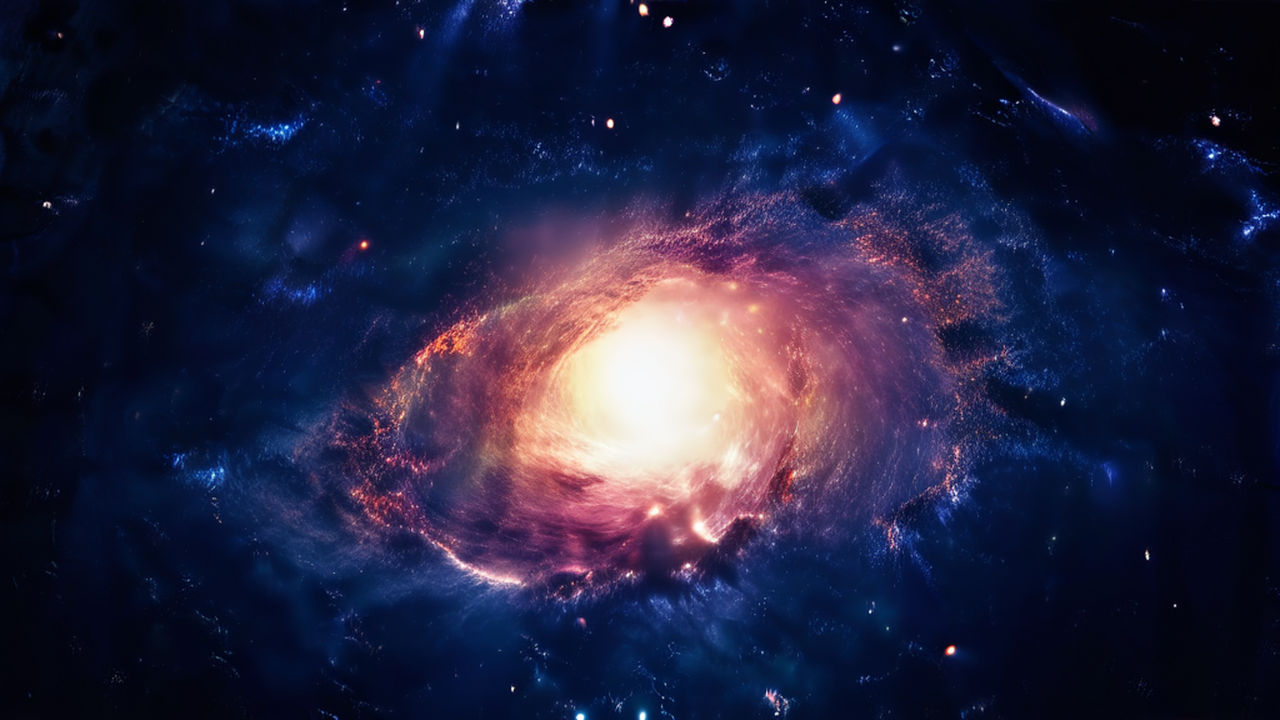Introduction
Understanding the Basics of Black Holes
Black holes, enigmatic entities in the cosmos, have long captivated the imaginations of scientists and laypersons alike. Understanding their fundamental properties is key to unlocking the mysteries of the universe.
The Significance of Black Holes in Astrophysics
In the realm of astrophysics, black holes hold immense importance. They serve as cosmic laboratories, providing insights into the nature of space, time, and gravity. Studying black holes enables us to push the boundaries of our understanding of the universe.
Defining Black Holes
What Exactly is a Black Hole?
A black hole is a region in space where gravity is so strong that nothing, not even light, can escape its grasp. This phenomenon occurs when a massive star collapses under its own gravity at the end of its life cycle.
How are Black Holes Formed?
The formation of a black hole begins with the gravitational collapse of a massive star. When a star exhausts its nuclear fuel, it undergoes a supernova explosion. If the remaining core of the star is sufficiently massive, it collapses inward, forming a black hole. This process condenses the star’s mass into an infinitely dense point known as a singularity, surrounded by an event horizon beyond which nothing can escape.
Anatomy of a Black Hole
Event Horizon: The Point of No Return
The event horizon of a black hole is the boundary beyond which escape is impossible. Once an object crosses the event horizon, it is inexorably drawn into the black hole’s gravitational pull, with no possibility of return. This boundary marks the point of no return in the journey toward the singularity.
Singularity: The Heart of Darkness
At the center of a black hole lies the singularity, a point of infinite density where the laws of physics, as we currently understand them, break down. Here, space and time cease to exist in their conventional forms, creating a gravitational singularity of incomprehensible intensity. The singularity is shrouded in mystery, representing the ultimate enigma of black hole physics.
Accretion Disk: Feeding the Beast
Surrounding the black hole’s event horizon is an accretion disk, a swirling disk of gas, dust, and other celestial debris. As matter falls toward the black hole, it forms this disk, which spirals inward due to the black hole’s gravitational pull. The accretion disk serves as a cosmic buffet, feeding the voracious appetite of the black hole as it consumes nearby material.
Types of Black Holes
Stellar Black Holes
Stellar black holes are formed from the collapse of massive stars at the end of their life cycle. These black holes typically have masses ranging from a few times that of the Sun to around 20 times the Sun’s mass. They are relatively common in the universe and are often found in binary systems with a companion star.
Intermediate Black Holes
Intermediate black holes occupy a middle ground between stellar and supermassive black holes in terms of mass. They are hypothesized to form through the mergers of smaller black holes or through the collapse of massive gas clouds. Intermediate black holes have masses ranging from hundreds to thousands of times that of the Sun and are less common than stellar black holes.
Supermassive Black Holes
Supermassive black holes are the largest type of black holes known to exist, with masses millions to billions of times that of the Sun. These behemoths reside at the centers of most galaxies, including our own Milky Way. The origins of supermassive black holes remain a subject of intense study, with theories suggesting they may form from the gradual accumulation of matter over cosmic time or through the rapid collapse of massive gas clouds in the early universe.
The Mysterious Nature of Black Holes
Escape Velocity: Why Nothing Can Break Free
One of the most intriguing aspects of black holes is their immense gravitational pull, which creates an escape velocity greater than the speed of light. This means that once an object crosses the event horizon of a black hole, it is trapped forever within its gravitational grasp. Even light, the fastest entity in the universe, cannot escape the black hole’s clutches, rendering it invisible to outside observers.
Spaghettification: The Bizarre Effects of Gravity
As objects approach a black hole, they experience extreme tidal forces due to the intense gravitational field. This tidal stretching effect, known as spaghettification, causes objects to be stretched into long, thin strands resembling spaghetti. This phenomenon occurs because the gravitational pull on the side of the object closest to the black hole is significantly stronger than the pull on the opposite side, resulting in a dramatic distortion of the object’s shape.
Time Dilation: How Time Warps Near a Black Hole
According to Einstein’s theory of general relativity, gravity can warp both space and time. Near a black hole, the gravitational field is so intense that time itself is affected. This phenomenon, known as time dilation, causes time to appear to pass more slowly for an observer close to the black hole compared to an observer farther away. As a result, time near a black hole appears to stretch and slow down, leading to strange and counterintuitive effects on the perception of time.
Black Hole Paradoxes
Information Paradox: Does Information Get Lost?
One of the most perplexing paradoxes surrounding black holes is the information paradox. According to classical physics, when matter is consumed by a black hole, it is believed to be irretrievably lost, leading to the destruction of any information it contained. However, this contradicts the principles of quantum mechanics, which state that information cannot be destroyed. This discrepancy has sparked intense debate among physicists, with various theories proposed to reconcile the apparent loss of information with the laws of quantum mechanics.
Firewall Paradox: Are Event Horizons Real?
The firewall paradox challenges the traditional concept of event horizons, the theoretical boundary beyond which nothing can escape a black hole’s gravitational pull. According to quantum mechanics, particles near the event horizon should become entangled with those inside the black hole, leading to the formation of a firewall—a region of intense radiation that incinerates anything attempting to cross the event horizon. This contradicts the notion of a smooth event horizon and has profound implications for our understanding of black hole physics. The resolution of this paradox remains an active area of research, with physicists seeking to reconcile quantum mechanics with the classical theory of gravity.
Observing Black Holes
How Do Scientists Detect Black Holes?
Detecting black holes directly is challenging due to their inherently dark nature. Instead, scientists rely on observing the effects of black holes on their surroundings. One common method is to search for the gravitational influence of black holes on nearby objects, such as stars or gas clouds. This can be detected through the motion of these objects, which may exhibit irregular or accelerated orbits indicative of the presence of a black hole. Additionally, scientists use indirect methods such as detecting the X-rays emitted by hot gas as it spirals into a black hole, known as accretion disks.

Advancements in Telescopic Technology
Recent advancements in telescopic technology have revolutionized our ability to observe black holes and their surroundings. Ground-based telescopes equipped with adaptive optics technology can compensate for the distorting effects of Earth’s atmosphere, providing sharper images of celestial objects. Additionally, space-based telescopes like the Hubble Space Telescope and the Chandra X-ray Observatory offer unparalleled views of distant galaxies and black hole phenomena. The development of interferometric techniques, such as the Event Horizon Telescope (EHT), has enabled scientists to capture unprecedented images of black holes, including the groundbreaking first image of the supermassive black hole at the center of the galaxy M87. These advancements continue to push the boundaries of our understanding of black holes and the universe at large.
Recent Discoveries
Imaging the Unseeable: The First Image of a Black Hole
In April 2019, scientists made history by capturing the first-ever image of a black hole. This groundbreaking achievement was made possible by the Event Horizon Telescope (EHT), a global network of radio telescopes synchronized to create a virtual Earth-sized telescope. By combining data from multiple telescopes, researchers were able to produce an image of the supermassive black hole at the center of the galaxy M87. The image revealed the silhouette of the black hole’s event horizon, providing compelling evidence of the existence of these mysterious cosmic entities.
Gravitational Waves: Ripples in Spacetime
Another significant recent discovery in the study of black holes is the detection of gravitational waves—ripples in the fabric of spacetime—emanating from black hole mergers. This groundbreaking achievement was made possible by the Laser Interferometer Gravitational-Wave Observatory (LIGO) and the Virgo interferometer, which detected the gravitational waves produced by the merger of two black holes. These observations confirmed a key prediction of Einstein’s theory of general relativity and opened up a new era of gravitational wave astronomy. Since then, numerous gravitational wave events from black hole mergers have been detected, providing valuable insights into the dynamics and properties of black holes.
The Role of Black Holes in the Universe
Galactic Evolution: Black Holes at the Center of Galaxies
Black holes play a pivotal role in the evolution of galaxies. At the heart of most galaxies, including our own Milky Way, lies a supermassive black hole. These behemoths, with masses millions to billions of times that of the Sun, exert a profound influence on their surrounding environments. As matter falls into the black hole’s gravitational well, it releases vast amounts of energy in the form of radiation and powerful jets of particles. This process, known as accretion, can have far-reaching effects on the structure and dynamics of galaxies. Black holes are thought to regulate star formation rates, influence the distribution of matter within galaxies, and even play a role in the formation of galactic structures.
Cosmic Recycling: The Impact of Black Hole Mergers
Black hole mergers are violent cosmic events that release enormous amounts of energy in the form of gravitational waves. When two black holes collide and merge, they produce gravitational waves that ripple through the fabric of spacetime, carrying information about the merging process. These mergers are believed to be key drivers of cosmic evolution, contributing to the growth of supermassive black holes and the formation of new stars and galaxies. Additionally, black hole mergers are thought to play a role in the synthesis of heavy elements, such as gold and platinum, through processes occurring in the accretion disks surrounding merging black holes. By studying these mergers, scientists gain insights into the dynamics of black hole evolution and the interconnectedness of cosmic phenomena.
The Future of Black Hole Research
Emerging Technologies: What Lies Ahead?
The field of black hole research is on the cusp of exciting advancements driven by emerging technologies. One promising avenue is the continued development of gravitational wave detectors, such as the Laser Interferometer Space Antenna (LISA), which will allow scientists to detect gravitational waves from a wider range of sources, including smaller black hole mergers and events occurring farther back in cosmic history. Additionally, advancements in computational modeling and simulation techniques will enable researchers to explore complex astrophysical phenomena, such as the formation and evolution of black holes, with unprecedented detail and accuracy. Furthermore, the next generation of telescopes, both ground-based and space-based, will provide astronomers with even sharper views of black holes and their surroundings, shedding light on previously unexplored aspects of these enigmatic cosmic entities.
Unanswered Questions: The Mysteries Yet to Be Solved
Despite decades of research, black holes continue to pose numerous unanswered questions that challenge our understanding of the universe. Key among these mysteries is the nature of the singularity at the heart of a black hole and the role it plays in shaping the fabric of spacetime. Additionally, the origin of supermassive black holes and their relationship to the evolution of galaxies remains an open question, with competing theories seeking to explain their formation and growth over cosmic time. Furthermore, the information paradox and the firewall paradox continue to perplex physicists, highlighting the need for new theoretical frameworks that can reconcile the laws of quantum mechanics with the gravitational dynamics of black holes. As scientists push the boundaries of knowledge in the quest to unlock the secrets of black holes, these unanswered questions serve as guiding beacons, illuminating the path toward deeper insights into the nature of the cosmos.
Conclusion
In summary, black holes remain one of the most intriguing and enigmatic phenomena in the universe. From their formation to their role in shaping the cosmos, black holes continue to fascinate and perplex scientists and enthusiasts alike. The ongoing quest to understand these cosmic enigmas represents a journey into the unknown, driven by curiosity and a thirst for knowledge. As we unravel the mysteries of black holes, we gain not only insights into the fundamental laws of physics but also a deeper appreciation for the vast and wondrous universe in which we live. The exploration of black holes is a testament to humanity’s insatiable curiosity and the relentless pursuit of understanding, marking a pivotal chapter in our ongoing quest to uncover the universe’s darkest secrets.
FAQs
- What is a black hole?
- A black hole is a region in space where gravity is so strong that nothing, not even light, can escape its grasp.
- How are black holes formed?
- Black holes are formed from the gravitational collapse of massive stars at the end of their life cycle.
- Can anything escape from a black hole?
- Once an object crosses the event horizon of a black hole, it is trapped forever within its gravitational pull, with no possibility of escape.
- Do black holes exist in every galaxy?
- Most galaxies, including our own Milky Way, are believed to harbor supermassive black holes at their centers.
- What happens if you fall into a black hole?
- If you were to fall into a black hole, you would be stretched and torn apart by the immense gravitational forces in a process known as spaghettification.


